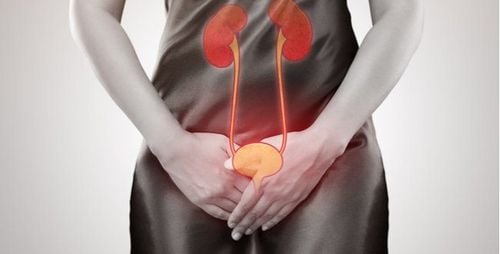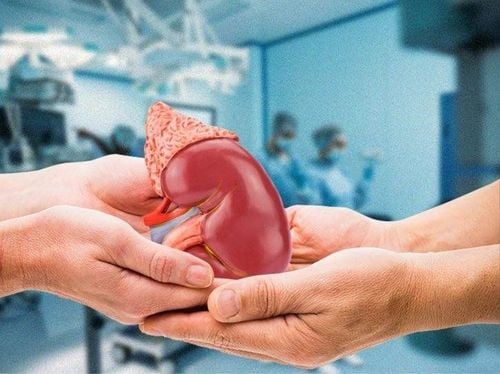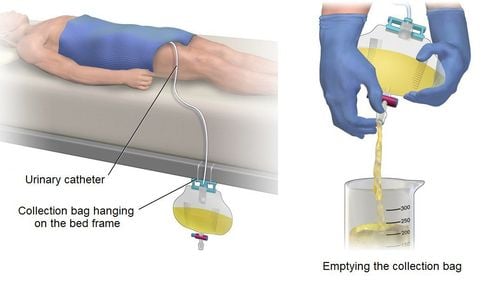This is an automatically translated article.
The article was professionally consulted with Master, Doctor Le Phuc Lien - Urologist - Department of General Surgery - Vinmec Central Park International General Hospital.Patients with urinary retention, prostate tumor or neurogenic bladder disease are common indications for clinical bladder catheterization. In addition, before some types of surgery, most commonly cesarean section, the patient also needs to have urinary catheterization by means of a catheter that drains the bladder through the urethra.
1. Overview of bladder catheterization
Bladder catheterization procedures are divided into two types, including: catheterization of bladder drainage through the urethra and catheterization of drainage directly into the bladder through the pubic bone.The method of placing a bladder drain through the urethra, also known as urinary catheterization, is often performed in clinical practice. The drains used for urinary catheterization are usually foley and nelaton catheters with various sizes and materials depending on the age and condition of each specific patient.
In contrast, suprapubic bladder catheterization is a more invasive procedure that should be performed in the operating room and considered when making the indication.
Regardless of the cause, when a catheter is placed to drain the bladder for a long time, the patient faces many risks during the care and replacement of the bladder catheter.

Bệnh nhân nên lưu ý khi đặt ống thông dẫn bàng quang vì có nguy cơ biến chứng
2. Possible problems with bladder catheterization
Catheterization to drain the bladder for a long time carries many risks of dangerous complications. Chief among them are urinary tract infections, including infection at the external urinary opening adjacent to the foot of the urinary catheter, urethral infection, cystitis, pyelonephritis, renal abscess.If the catheter is kept for less than 7 days, the frequency of urinary tract infections is about 10 - 30%. The incidence of urinary tract infections increased in proportion to the length of time the drain was placed, increasing to a very high level if it persisted for more than 28 days. Bacteria can easily enter the sterile urinary system through procedures that are not guaranteed to be sterile.
Infections of the upper urinary system in patients with urinary catheters are often caused by bacteria traveling upstream from the urethra - bladder to the ureters and renal calyces. More seriously, urinary tract infections can lead to bacteremia or septic shock. These conditions are considered very critical because they are life-threatening.
Long-term urethral catheterization without the correct technique of fixing the tube causes pressure on the urethral mucosa, anemia leading to urethral stricture later.
In addition, bladder stones, atrophic cystitis, urine leakage, urinary catheter blockage are also other issues that need attention. Bladder stones are easy to appear when urine is not drained thoroughly, causing deposition of substances, especially when there is inflammation of the bladder lining. Repeated and prolonged inflammation of the bladder leads to atrophic cystitis. Stones from urine deposits, blood clots are the cause of blockage of the drainage duct, causing acute urinary retention or urine leakage through the external urethral orifice if the drainage tube is too small in size.
Bladder catheter replacement is a very common operation in patients with bladder catheterization. Doing this also brings many risks such as damage to the urethra, bladder, and prostate if done vigorously or improperly.
3. Risk factors for bladder catheterization
Complications can occur in all subjects with bladder catheterization, however, some special subjects will be at higher risk, including:Female: Due to the characteristics of the anatomical tract of the urinary tract. Urinary tract in women with short urethra makes it easier for bacteria to enter the bladder. Men are more likely to get orchitis or prostatitis than urinary tract infections. Age: Older people with poor health and weakened resistance are more susceptible to infections. Low urine output coupled with urinary retention increases the risk of stone formation and infection. Chronic conditions: Having multiple medical conditions at the same time is a disadvantage of having to wear a catheter to drain the bladder.

Người lớn tuổi là đối tượng dễ bị biến chứng khi đặt ống thông dẫn lưu bàng quang
4. Caring for patients with bladder catheterization
Living with a bladder catheter for a long time requires the patient as well as the caregiver to pay attention to many things to minimize complications. Some things to keep in mind include:All operations with the bladder catheterization system must adhere to the principle of aseptic. Urine bags should be selected with a valve, with a dosing line and regularly empty. Limit removal of the bag from the drain. Place the urinal bag in a low position to prevent backflow of urine from the bladder into the ureter. Fixing the urinary catheter properly: Apply a tape to fix the urinary catheter on the inner side of the thigh for female patients and on the groin area for male patients, leaving a gap of movement to avoid compression and stretching. pressure on the urethral opening. Drink plenty of water, make sure the urine output is about 2 liters/day. When the catheter is found to be blocked, it is necessary to flush the bladder with a syringe through the drain. This operation should be performed by medical personnel. Replace drains once a month. Clean the external genitalia, anus and external urinary tract regularly for the patient. If there is a catheter to drain the bladder through the pubic bone, make sure the incision is dry and clean, change the dressing and clean the incision, and avoid urine contamination. Monitor and detect abnormal symptoms such as abdominal pain, fever, bloody urine, cloudy urine, sediment, unusual odors... to promptly handle.
Please dial HOTLINE for more information or register for an appointment HERE. Download MyVinmec app to make appointments faster and to manage your bookings easily.













